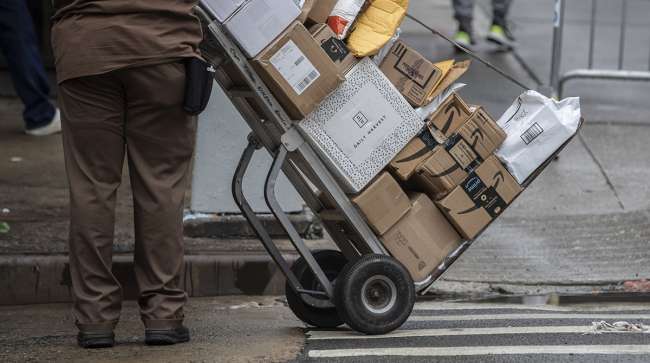Staff Reporter
Trucking Faces Transitional Year in 2021

[Ensure you have all the info you need in these unprecedented times. Subscribe now.]
Trucking is entering a year of change as the industry confronts a new phase of the coronavirus pandemic and adjusts to new practices.
“I think next year is definitely going to be a transitional year,” Farrah Salim, senior principal analyst at research and consulting firm Gartner, told Transport Topics. “The challenges that shippers have faced this year, I think have highlighted the fact there are inefficiencies in the transportation industry that have gone on for a very long time.”
Alex Scott, assistant professor of supply chain management at Michigan State University, doesn’t foresee a return to normal for a while. He noted it will be at least six months until the transportation market is not being largely affected by the pandemic. He also noted that in some cases there may be a permanent shift.
The current wave of infections could force some retrenchment in commerce if it escalates. On the other hand, COVID-19 vaccines could become widely available more quickly than we assumed. Those alternatives represent sharply different outcomes for the economy and freight.
Avery Vise, FTR Transportation Intelligence
“People have had to order more online with the shutdowns in 2020, and many of those purchasing habits are likely to be permanent,” Scott said. “This will affect distribution patterns to some extent. Second, while retail sales have been strong during the pandemic, manufacturing has been harder hit. Carriers have had to shift both their capacity and the lanes.”
FTR Transportation Intelligence expects freight demand to be solid during the year, but there are risks to that outlook. The industry research firm warns there is a lot of uncertainty, and it cannot be assumed the truck freight market will return to any sort of normal until the pandemic is over.
“In large part because the recovery was so strong in the third quarter, we are already beginning to see stabilization of demand growth rates,” Avery Vise, vice president of trucking at FTR, told TT. “The lag in the industrial sector’s recovery means that total freight volume probably still will not match pre-pandemic levels until around the middle of next year.”
FTR is watching factors that could affect freight demand such as the extraordinarily lean retail inventories and spending shifting toward goods. Vise also warned distortions to the economy brought on by the pandemic mean that demand and capacity will not move normally.
“We face uncertainties related to the virus itself,” Vise said. “The current wave of infections could force some retrenchment in commerce if it escalates. On the other hand, COVID-19 vaccines could become widely available more quickly than we assumed. Those alternatives represent sharply different outcomes for the economy and freight.”
Salim noted that when speaking with shippers many are planning for the freight industry to normalize around the second quarter of 2021. The expectation is enough time will have passed for the majority of the population to be vaccinated and the economy to open up.
“There definitely needs to be enough time for the economy to recover,” Salim said. “The hope is there is some kind of normalization at that time. But I think that will also be sufficient time to have some of these constraints depressurize the market.”
Salim noted demand, capacity and overall economic activity is what she would look at to assess the trucking industry. She sees a heightened degree of demand with companies making up for earlier in the pandemic to build inventories and increase sales targets.
“Demand and capacity are things that should normalize by that time,” Salim said. “In addition to the normal cyclical holiday season, there’s a lot of freight moving, which is typically the case every year, but I think in addition to that there is a push to make up for that time that was lost.”
- The year's Top 10 stories
- The year in charts
- Stories: Business | Government
- Video: Business | Tech | Government
- Podcast: Part One | Part Two coming soon
She noted that when the trucking industry stabilizes and gets backs to a sense of normal, it won’t necessarily be like before. The coronavirus created a situation in which a lot of issues could no longer be ignored. So there will be great incentives to address them.
“We’re seeing things that will warrant permanent change later on as these different carriers take the lessons learned and revise their strategies to address customer demands,” Salim said. “The customers have a great deal of things they would like to see the industry resolve, and I think they’re going to try to resolve them. I think after COVID we will see a new status quo.”
Salim added that one example is how many trucking companies still use manual processes such as paperwork. She noted shippers may have not previously been focused on something like that but now are. She also indicated another issue is driver capacity constraints. FTR expects that the tight driver capacity is essentially baked into 2021.
“We have seen a reduction in the pipeline of new drivers due to constraints at driving schools and state licensing agencies,” Vise said. “A worsening COVID-19 situation will exacerbate those trends, and accelerated vaccine availability could start to alleviate them.”
Want more news? Listen to today's daily briefing:
Subscribe: Apple Podcasts | Spotify | Amazon Alexa | Google Assistant | More






